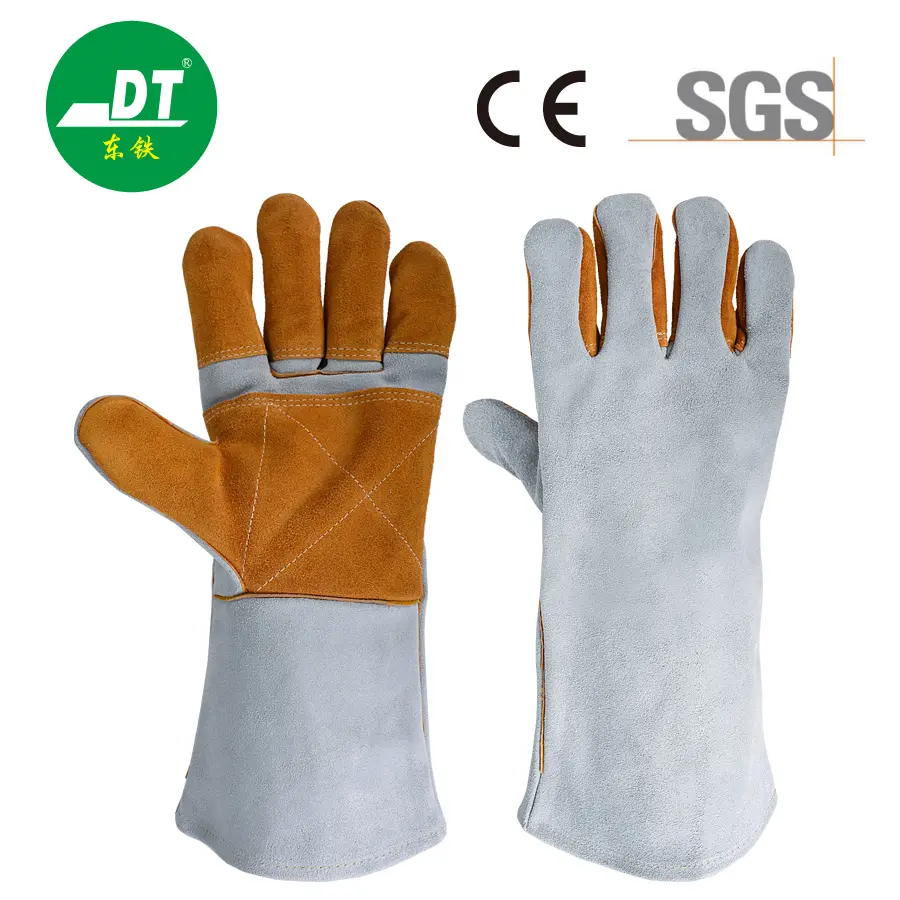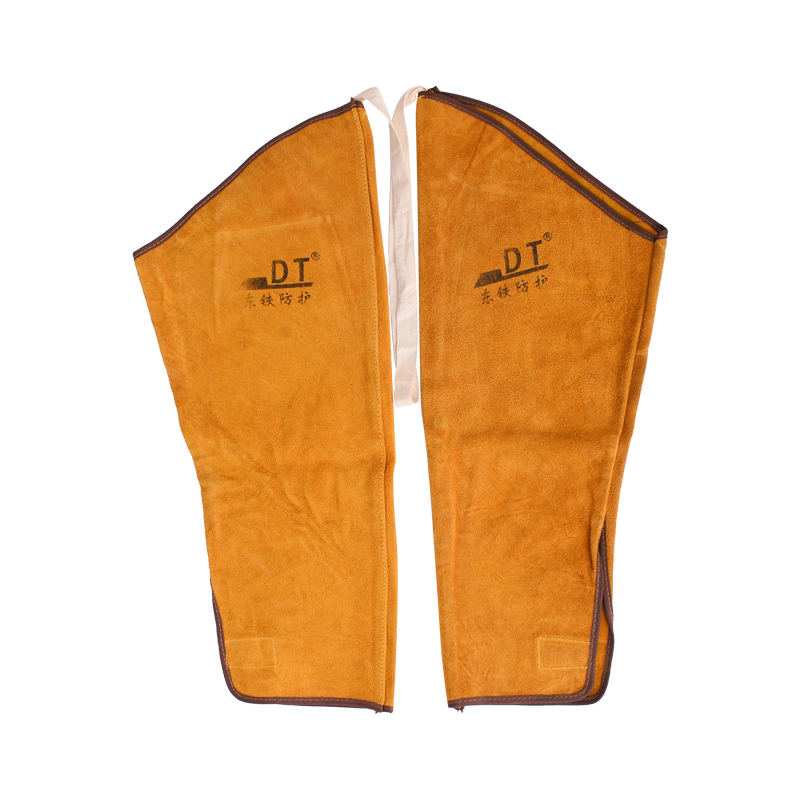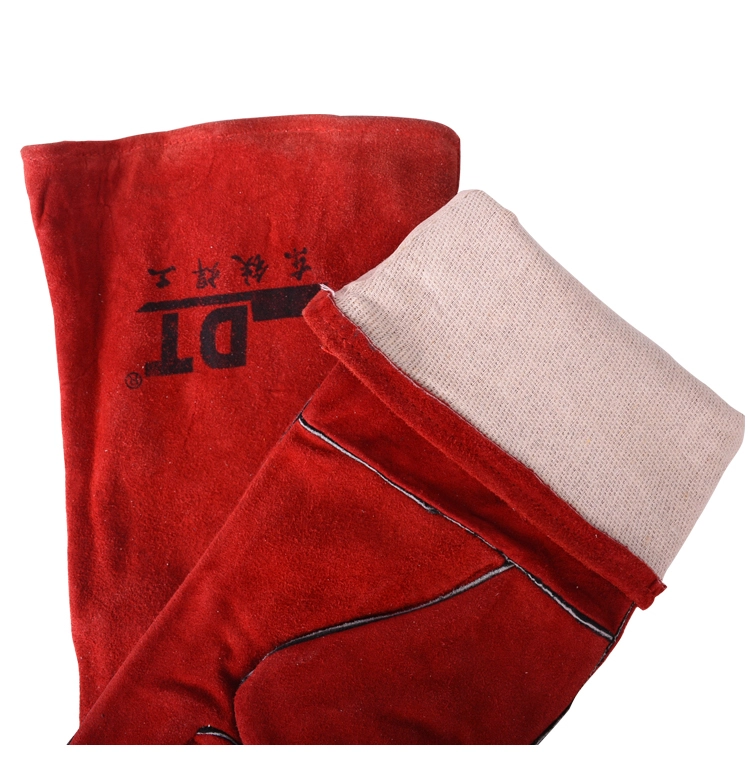Choosing the Right Welding Gloves: A Comprehensive Guide for Every Welding Type
Selecting the right welding glove is not just a matter of comfort; it's a critical decision for safety, efficiency, and the quality of your work. For procurement officers like Mark Thompson and the welders who depend on his choices, understanding the nuances between different types of welding gloves can be the difference between a job well done and a serious injury. This guide will walk you through everything you need to know to choose the right pair of welding gloves. We will explore the materials, designs, and specific features tailored for TIG, MIG, and Stick welding, ensuring you can make an informed decision that protects your hands and improves your performance.
Why Can't I Just Use Any Work Glove for Welding?
It's a question we sometimes hear from those new to the industry. Why invest in a specialized welding glove when a standard pair of work gloves seems sufficient? The answer lies in the unique and extreme hazards of the welding process. Your average pair of general use work gloves is designed for basic abrasion and impact resistance, but they are completely unprepared for the dangers of welding.
Welding generates intense heat, molten metal spatter, and harmful ultraviolet (UV) and infrared (IR) radiation. A standard work glove will simply not stand up to these challenges. The heat can cause the glove material to melt or ignite, offering zero protection and potentially causing severe burns. Furthermore, they lack the necessary insulation to protect your hands from the radiant heat generated during welding, which can cause discomfort and lead to long-term health issues. The right welding glove is engineered with specific materials and construction techniques to shield you from every one of these threats. Choosing the correct glove is your first line of defense in any welding application.
What Are the Main 3 Types of Welding Gloves?
While there is a vast selection of welding gloves on the market, they can generally be categorized based on the specific welding process they are designed for. Different types of welding require different levels of heat protection and dexterity. As a manufacturer, we design each glove with these specific needs in mind. The main 3 types of welding gloves are for TIG, MIG, and Stick welding.
- TIG (Tungsten Inert Gas) Gloves: Prioritize feel and dexterity for precise control.
- MIG (Metal Inert Gas) Gloves: Offer a balance of heat protection and moderate dexterity.
- Stick (Shielded Metal Arc Welding) Gloves: Provide maximum heat and spatter protection for high-amperage applications.
Understanding the demands of each welding type is the foundation for selecting the right glove. Using a heavy-duty stick welding glove for delicate TIG work is impractical, and using a thin TIG glove for high-heat stick welding is extremely dangerous. Let's look at what makes each type of glove unique.

What Should I Look For in TIG Welding Gloves?
TIG welding is an art form. It demands precision, control, and a steady hand to feed the filler rod. Because of this, the most important characteristic of a TIG glove is dexterity. Since TIG welding produces less spatter and radiant heat compared to MIG or Stick welding, the glove can be thinner, allowing for a much better feel of the torch and filler wire. A bulky glove would make this delicate process nearly impossible.
When shopping for welding gloves for TIG, you should look for a glove made from soft, supple materials. Goatskin gloves are a very popular choice for TIG welding because the leather is thin, strong, and provides excellent tactile sensitivity. Deerskin is another excellent option. These gloves often feature a shorter cuff and are unlined to maximize feel. A good TIG welding glove should fit like a second skin, enabling you to make the minute adjustments necessary for a perfect weld. This kind of glove prioritizes control over heavy insulation.
How Are MIG Welding Gloves Different?
MIG welding is the versatile workhorse of the welding world, used in everything from automotive repair to fabrication. It generates more heat and spatter than TIG welding, so the gloves need to offer more protection. However, you still need a decent amount of dexterity to control the MIG gun and maintain a consistent travel speed. Therefore, MIG welding gloves strike a careful balance between protection and maneuverability.
A quality MIG glove is typically made from cowhide or pigskin, which are thicker and more durable than goatskin. They often feature a cotton or fleece lining to insulate the hand from heat without being excessively bulky. Many MIG welding gloves also have a reinforced palm and thumb area to withstand the constant friction and heat from the welding gun. The cuff is longer than on a TIG glove to protect the wrist and forearm from spatter. This type of glove is a great all-around choice if you perform different types of welding but primarily focus on MIG.
What Makes Stick Welding Gloves So Tough?
Stick welding, or SMAW, is the most heavy-duty of the common welding processes. It produces a tremendous amount of heat, sparks, and spatter. Consequently, stick welding gloves are all about maximum protection. Dexterity takes a backseat to ensuring your hands are shielded from extreme temperatures and flying molten metal. When you're doing stick welding, you want a thicker glove with substantial insulation.
These rugged gloves are almost always made from thick, split-leather cowhide, which is excellent at repelling heat and resisting abrasion. They feature heavy-duty linings, often made from wool, felt, or multiple layers of cotton, to provide superior thermal insulation. A good stick glove will also have features like welted seams (where a strip of leather protects the stitching from sparks) and a long, rigid cuff for full forearm protection. If you are performing high-amperage stick welding applications, there is no substitute for the robust protection this kind of glove provides.

What Materials Are Welding Gloves Made From?
The material a glove is made from is the single most important factor determining its performance. Different leathers offer different combinations of durability, heat resistance, and flexibility. As a factory, we source various high-quality leathers to construct the perfect glove for each welding process. The most common welding gloves are made from several types of leather.
Here is a breakdown of the most common materials used in welding gloves:
| Material | Primary Use | Pros | Cons |
|---|---|---|---|
| Cowhide | MIG, Stick | Durable, good heat resistance, cost-effective | Can be stiff initially |
| Goatskin | TIG | Excellent dexterity, soft, strong | Less heat resistant |
| Deerskin | TIG, MIG | Very soft and flexible, high dexterity | More expensive, less durable |
| Pigskin | MIG, Stick | Stays soft after getting wet, durable | Can be less heat resistant |
| Kevlar® | Liners, Stitching | Extreme heat & cut resistance | Expensive as a primary material |
| Aluminum Foil | Back of Hand | Reflects radiant heat | Reduces flexibility |
Top-grain leather (from the outer layer of the hide) is smooth and more durable, while split-leather (from the inner layers) offers better heat resistance. Many premium welding gloves use a combination, such as a top-grain goatskin palm for feel and a split-cowhide back for heat protection. The stitching is also critical; look for gloves stitched with Kevlar® thread, which won't burn or melt like cotton or nylon. Choosing a glove with the right materials, like those featuring Kevlar® stitching and heat-resistant materials, is key to its longevity and protective capabilities.
How Does Amperage Affect My Glove Choice?
A crucial factor that is often overlooked when selecting the right glove is the amperage of your welding process. The higher the amperage, the more intense the heat and UV radiation generated by the arc. This has a direct impact on the kind of gloves you need. A low-amperage TIG weld at 80 amps produces far less radiant heat than a high-amperage Stick weld at 250 amps.
Think of it as a simple rule: Higher Amps = Thicker Glove.
- Low Amperage (under 150A): Typically for TIG welding. A thin, dexterous glove made from goatskin or deerskin is ideal.
- Medium Amperage (150A - 250A): Common for MIG welding and some light stick welding. A medium-weight cowhide or pigskin glove with a light lining is appropriate.
- High Amperage (over 250A): Reserved for heavy stick welding or flux-core welding. You need the thickest, most insulated glove you can find, typically a heavy-duty split-cowhide stick welding glove.
Ignoring amperage when you choose gloves is a recipe for disaster. A glove that feels comfortable during a quick, low-amperage tack weld might become dangerously hot during a long, high-amperage pass. Always match your glove to the maximum amperage you plan to use for that welding type.
What Do Safety Certifications like CE and ANSI Mean for Welding Gloves?
For a procurement officer like Mark, ensuring that safety equipment meets established standards is non-negotiable. Certifications from recognized bodies like CE (Conformité Européenne) and ANSI (American National Standards Institute) provide third-party validation that a glove performs as advertised. These certifications are a stamp of quality and reliability. When you see a CE or ANSI mark on a glove, it means the gloves provide tested and rated levels of protection.
These standards test for several key performance metrics relevant to welding:
- Thermal Performance (EN 407): This is a critical CE standard for welding gloves, rating the glove's resistance to flammability, contact heat, convective heat, and small splashes of molten metal.
- Cut Resistance (ANSI/ISEA 105): Rates the glove's ability to resist cuts from sharp objects on a scale from A1 to A9.
- Abrasion Resistance: Measures how well the glove material holds up to wear and tear.
- Puncture Resistance: Tests the glove's ability to resist being pierced by sharp objects.
As a manufacturer, we take these standards seriously. We design and test our gloves to meet or exceed these requirements because we know that our clients depend on that reliability. When you choose the correct glove, look for these markings. They are your assurance that the gloves to ensure safety have been rigorously evaluated.

How Do I Choose the Right Size and Fit?
One of the most common pain points for buyers is inconsistent sizing. A glove that is too big can easily get snagged on equipment, and the lack of feel can be dangerous. A glove that is too small will restrict blood flow, cause hand fatigue, and reduce your dexterity. The gloves you choose should feel secure without being constricting.
A properly fitting welding glove should have a little bit of room at the fingertips but not so much that the material bunches up when you make a fist. The gloves should fit snugly across your palm and knuckles, allowing you to open and close your hand freely. From our experience, we always advise customers to measure their hands if they are unsure. You can measure the circumference of your hand around the knuckles (excluding the thumb) to find your size. A good fit is not just about comfort; it's a crucial component of safety and will make a huge difference in your welding performance.
Beyond the Glove: What Other Protective Apparel Should I Consider?
While welding gloves are essential, they are only one part of a complete personal protective equipment (PPE) system. The same heat, spatter, and UV rays that can injure your hands can also harm other parts of your body. A stray spark can easily burn through a cotton shirt or land in a shoe. To ensure comprehensive safety, you should always supplement your gloves with other protective gear.
This is especially true for high-spatter processes like Stick and Flux-Core welding. Here are some other essential items:
- Welding Jacket or Sleeves: Made from flame-retardant cotton or leather, these protect your torso and arms.
- Welding Apron: A leather apron provides an extra layer of protection for your chest and legs. Consider how you can complete your protection with a cowhide welding work apron.
- Welding Cap or Hood: Protects your head and neck from overhead sparks.
- Foot Covers (Spats): Leather spats cover the top of your boots to prevent sparks from falling inside.
- Welding Helmet: Absolutely mandatory for protecting your eyes and face from intense UV/IR radiation and impact.
Investing in a full set of protective gear is just as important as selecting the right pair of welding gloves. It creates a complete barrier between you and the hazards of the job.

Key Takeaways
Choosing the right welding glove can seem complicated, but by breaking it down by welding type, material, and amperage, you can make a smart, safe choice. A quality glove is an investment in your safety and productivity. The right pair of gloves can make a huge difference in your welding speed and quality.
Here are the most important things to remember:
- Match the Glove to the Process: Use thin, dexterous goatskin or deerskin gloves for TIG; balanced cowhide gloves for MIG; and heavy-duty, insulated cowhide gloves for Stick welding.
- Consider the Amperage: The higher the amps, the more heat protection you need. Never use a lightweight glove for a high-amperage application.
- Material Matters: The type of leather and lining directly impacts the glove's performance. Cowhide offers durability, while goatskin provides feel. Kevlar® stitching is a must for longevity.
- Check for Certifications: Look for CE (EN 407) and ANSI ratings to ensure the glove has been tested for safety and performance.
- Fit is Crucial: Your gloves should fit snugly but not be tight. A proper fit enhances safety, comfort, and control.
- Don't Forget Other PPE: Gloves are just one part of the system. Always use a welding helmet, jacket, and other protective apparel to stay safe.






